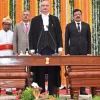Top 10 Ancient Forts of Jharkhand – Must Visit in 2025
Discover Jharkhand’s timeless forts with quick facts, travel tips, and a handy comparison table.
Hidden among Jharkhand’s dense forests and rolling hills lie architectural treasures that have stood the test of time—ancient forts that whisper tales of valor, strategic brilliance, and cultural grandeur. These stone sentinels aren’t just relics of the past; they’re living narratives of dynasties that ruled, battles that raged, and civilizations that flourished in the heart of eastern India.
Quick Comparison: Top 10 Forts
| Fort Name | Location | Unique Feature | Visitor Tip |
|---|---|---|---|
| Palamu Fort (Purana & Naya) | Latehar (near Betla National Park) | Twin fortress system; Nagpuri Darwaza | Hike to Naya Quila at sunrise for panoramic views |
| Narayanpur Fort | Nawagarh, Latehar | Administrative planning under Chero rulers | Pair with Palamu for a fuller Chero trail |
| Shahpur Chandani Fort | Palamu (on Koel River) | Riverside stronghold; siege-ready water access | Best during/after monsoon for lush scenery |
| Bishrampur Fort | Palamu | Temple integrated within fort walls | Respect religious areas; modest attire recommended |
| Chainpur Palace | Medininagar (Koel River) | Rajputana meets local styles | Golden-hour photos by the riverside ruins |
| Rohila Fort | Alinagar (near Japla), Palamu | Distinct triangular plan | Carry a wide-angle lens for geometry shots |
| Kunda Fort | Chatra (Kunda region) | Northern administrative hub | Ask locals for oral histories and access info |
| Jaintgarh Fort | West Singhbhum (Dakshin Vaitarni) | Porhat kings’ tribal sovereignty | Expect remote travel; carry essentials |
| Jagannathpur Fort | West Singhbhum (hilltop) | Defense plus devotion | Moderate trek; start early to avoid heat |
| Panchkot (Panchet) Fort | Dhanbad (near Barakar) | Five concentric defensive walls | Stay for sunset over Damodar Valley |
“Palamu Fort and its siblings are not just ruined walls; they are storytellers, with every brick echoing centuries of courage and cultural evolution.”
Highlights and Experiences
- Palamu Fort: Trek to Naya Quila at sunrise; marvel at Nagpuri Darwaza.
- Narayanpur Fort: Study the Chero administrative genius up close.
- Shahpur Chandani Fort: River vistas; best after rains.
- Bishrampur Fort: Spiritual aura meets defense architecture.
- Chainpur Palace: Rajputana artistry with local elegance.
- Rohila Fort: Triangular geometry that’s rare in India.
- Kunda Fort: Power center that shaped northern Jharkhand.
- Jaintgarh Fort: Tribal strength and resilience.
- Jagannathpur Fort: Hilltop sanctity with sweeping views.
- Panchkot Fort: Layers of defense and legends.
Honorable Mentions
- Teliagarh Fort, Sahebganj: Gateway between Bengal and Jharkhand on Rajmahal hill.
- Ramgarh Fort, Ramgarh: Mughal-inspired elegance.
- Badam Fort, Hazaribagh: Shiva temple within the complex.
Essential Travel Tips
- Best time: October–March
- Footwear: Comfortable hiking shoes
- Carry: Water, snacks, basic first-aid
- Respect sites: No littering or vandalism
- Permissions: Required at select remote forts
- Connectivity: Patchy in interiors—download maps offline
The Timeless Message of Jharkhand’s Forts
Jharkhand’s ancient forts are more than historical monuments—they’re portals to a bygone era when kingdoms rose and fell, warriors fought with honor, and architectural brilliance served both aesthetic and strategic purposes. Each fort has its own personality and lessons about resilience, cultural fusion, and human ambition.
Have you visited any of these magnificent forts? Share your moments and tips in the comments below—your story might inspire the next heritage explorer. Safe travels and happy exploring! 🏰✨


